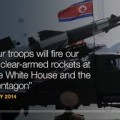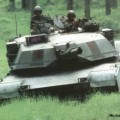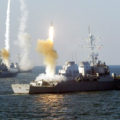Is America adequately protected? Unlike other federal programs, determining the adequacy of the military depends not on internal factors, but on foreign challenges.
Comparing the budgets of various nations is an ineffective way of determining strength. Countries with “command economies” can purchase and deploy their forces at far cheaper rates than democracies. The ability to hide expenditures in the absence of a free press is an important factor, as well.
 After a brief period of relative calm between the “great powers” following the collapse of the Soviet Union and before China’s economy accelerated, the world descended into a dangerous era in which both Moscow and Beijing became increasingly aggressive, and lesser powers such as Iran and North Korea sought to become nuclear powers. China’s defense budget will increase by 7.5% in the coming year. Russia’s Vladimir Putin is moving rapidly ahead to dramatically strengthen his nation’s nuclear arsenal. The U.S. continues to seek to recover from the eight years of diminished budgets from 2009–2016. The “Sequester” concept, which sought to enforce budgetary restraint by limiting funds to both civilian and military programs regardless of the relative importance of each, substantially damaged American military preparedness.
After a brief period of relative calm between the “great powers” following the collapse of the Soviet Union and before China’s economy accelerated, the world descended into a dangerous era in which both Moscow and Beijing became increasingly aggressive, and lesser powers such as Iran and North Korea sought to become nuclear powers. China’s defense budget will increase by 7.5% in the coming year. Russia’s Vladimir Putin is moving rapidly ahead to dramatically strengthen his nation’s nuclear arsenal. The U.S. continues to seek to recover from the eight years of diminished budgets from 2009–2016. The “Sequester” concept, which sought to enforce budgetary restraint by limiting funds to both civilian and military programs regardless of the relative importance of each, substantially damaged American military preparedness.
In his 2020 budget, President Trump seeks a 4.7% increase from last year’s spending level.
Some factors cannot be determined by merely comparing numbers of tanks, planes, ships and bombs. In an off-record conversation, a key former military leader I spoke to said that the Pentagon’s use of computer chips that may have been produced in China “kept him up at night,” because of the potential for them to be manipulated remotely during a crisis. Experts in the field say that even great equipment is only as good as those who use them, and a deficiency in training time over the past decade is worrisome. There is also the exhaustion factor. Both U.S. personnel and their weapons have been in almost constant warfare in the battle against terror.

Credit: Russia Ministry of Defense
But numbers do count. A key Heritage study of the adequacy of America’s military found that all four service branches are significantly below the strength needed to deter threats. According to the study, the Army needs 50 brigade combat teams. Currently, there are only 31, and only 15 are combat-ready. The Navy needs 400 battle ships. It has only 284. The Air Force requires 1,200 fighter/ground-attack aircraft, but has only 924. The Marine Corps should have 36 battalions, but can field only 24.
The condition of the nation’s strategic nuclear deterrent also is troubling. The study notes that “The infrastructure that supports nuclear programs is aged, and nuclear test readiness has revealed troubling problems within the forces. Additionally, the United States has conducted fewer tests of launch vehicles than in previous years.”
According to the study’s author, Dakota Wood, “The anecdotal evidence is consistent with direct conversations between Heritage scholars and high-level diplomatic and military officials from countries around the world: The perception of American weakness is destabilizing many parts of the world and prompting old friends to question their reliance on America’s assurances. For decades, the perception of American strength and resolve has served as a deterrent to adventurous bad actors and tyrannical dictators. Regrettably, both that perception and, as a consequence, its deterrent effect are eroding. The result is an increasingly dangerous world threatening a significantly weaker America.”
Timing is a key factor. Russia and China’s extensive modernization and enlargement programs are scheduled to be well underway by 2020. It will take up to a decade for many new or replacement American weapons programs to be completed and fielded, leaving a significant period of vulnerability within the coming decade.
Frank Vernuccio serves as editor-in-chief of the New York Analysis of Policy and Government.

















Follow Us